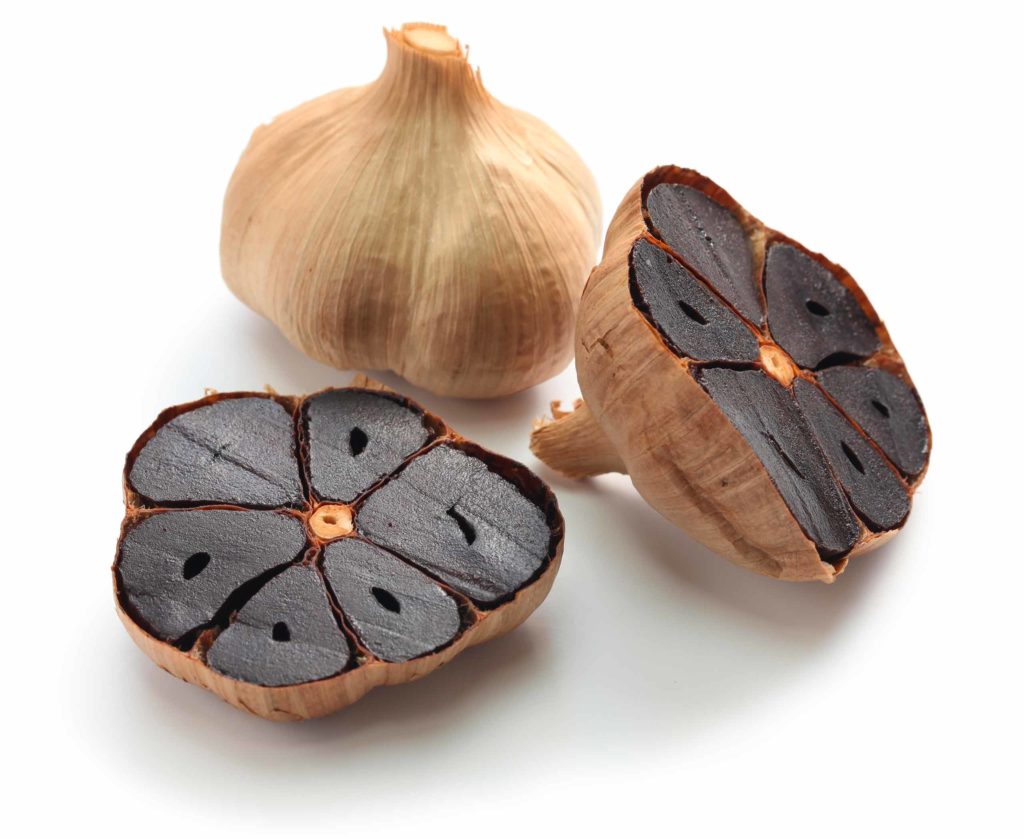Kuro Nikkoku is the Nipponese name for black garlic.
Of Korean origin for some, Japanese for others, black garlic doesn't leave you indifferent when you see it, but also and above all when you taste it.
Black garlic has been used for thousands of years in Asian cuisine, particularly in Japan, where it has become an everyday staple for both its culinary qualities and its medicinal properties.
Slow food, slow process: black garlic takes time to make
In the age of slow food, black garlic is an exceptional product that takes a long time to produce. A head of garlic (the bigger, the better) needs heat (between 65 and 80°C), humidity (65 to 90%) and time, from a minimum of 12 days' maceration to...8 weeks. Going from white to black, transforming taste and texture, involves this very slow transformation in the form of maceration. The fact that food turns black is not strictly speaking a fermentation process, but an enzymatic one. The strong becomes soft, the hard becomes supple.
To go into the details of the process, chemists refer to the Maillard reaction (Louis Camille Maillard being the father of this fortuitous discovery in 1911). This reaction corresponds to the action of sugars on proteins (amino acids), causing them to darken on cooking and contributing to the taste of roasted meat juices; white onions turn brown when cooked for a long time in contact with sugar (compote d'oignon, pissaladière niçoise). However, Maillard reactions are oxidation-reductions observed on foods cooked at high temperatures.
Black garlic with an exceptional taste
Between licorice, caramel and balsamic vinegar, black garlic is soft and sweet, whereas it was originally strong and pungent. Black garlic is a candy. Its change of state brings a fifth flavor, which the Japanese call umami. (salty, sweet, sour, bitter and umami).
But what is Umami?
Officially recognized as the fifth flavor, umami is the flavor of Japanese cuisine, the flavor that could identify those tastes close to full-bodied meat broths. More technically, umami is the flavor perceived on the tongue when the glutamates and nucleotides (components of nucleic acids) in food come into contact with our taste receptors. Soy sauce is umami, and some mushrooms are umami too (shiitake mushrooms).
So is this 5th flavor Japanese?
But umami is a recent development, since it was discovered in 1908 by the Japanese chemist Kikunae Ikeda, who noticed the taste of dashi(a broth made from kombu seaweed and dried bonito). We can therefore consider umami to be Japanese. What's more, he discovered that when foods containing glutamates met foods containing nucleotides, their flavors increased tenfold.
Exceptional medical benefits
You'll have to go to Aomori in northern Japan to meet Professor Jin-ichi Sasaki, who has demonstrated the benefits of black garlic for the body. Garlic, which initially contains multiple antioxidants, becomes black tenfold! More easily assimilated by the body, its antioxidant action helps fight free radicals, boosts the immune system and prevents food toxicity. It lowers cholesterol and blood pressure and increases good cholesterol. It also appears to help fight certain forms of cancer. The WHO (World Health Organization) recommends regular consumption of black garlic.
We're currently developing a range of umami products, including black garlic and other fruits and vegetables. The first heads of garlic should be available at the end of July, and we'll be sure to let you know about them. Follow the development of our black garlic here.
If you'd like to buy to buy our first heads of organic black garlic, click here!

